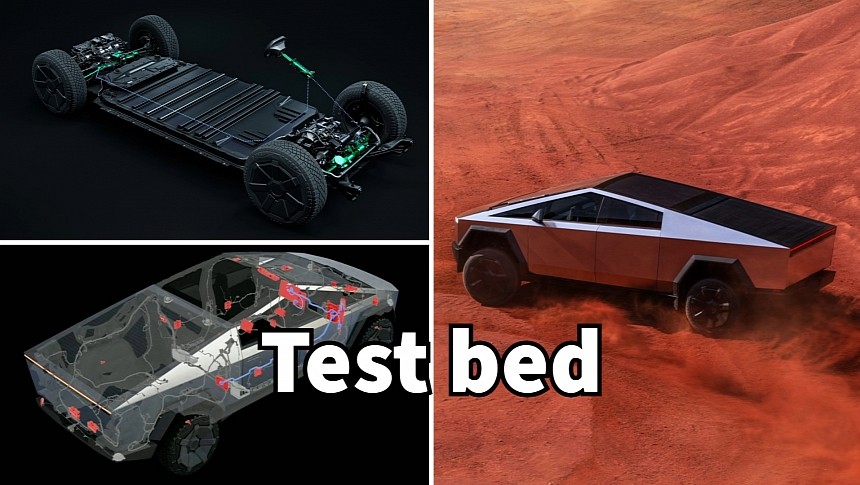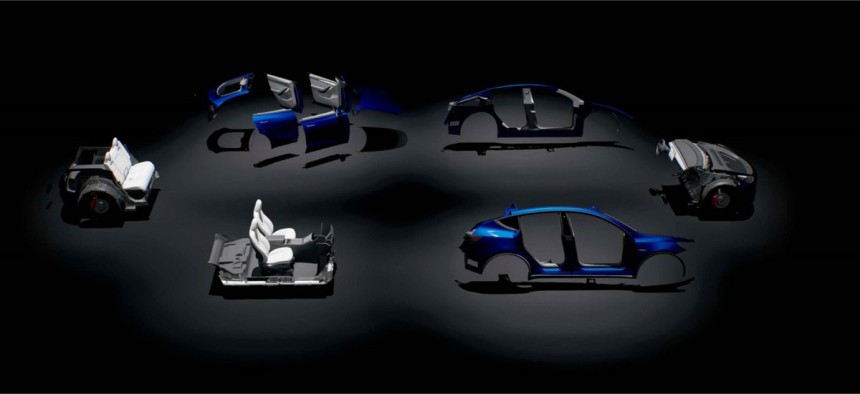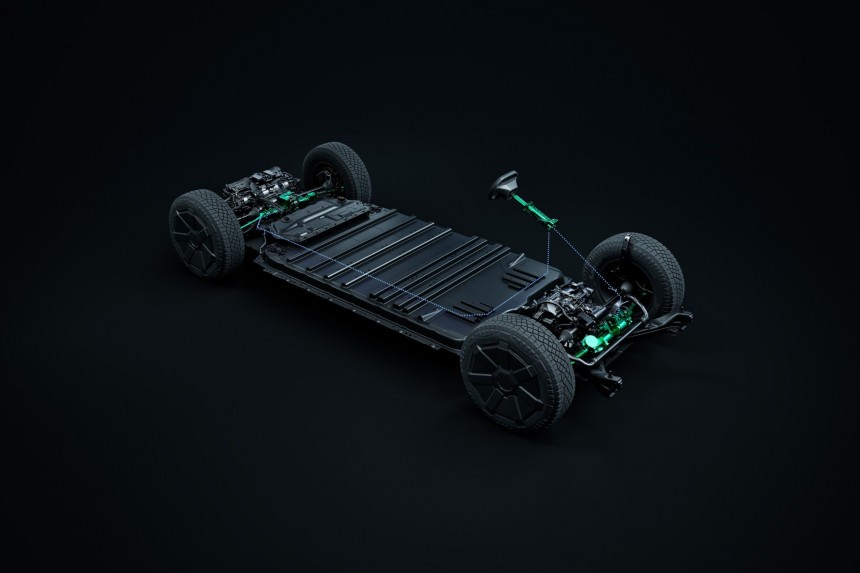Tesla started Cybertruck deliveries, making some of the early reservation holders happy. However, Cybertruck's role in Tesla's grand plan is much more important than that. The electric pickup is the foundation stone of all future electric vehicles, including the next-generation EV platform that will underpin the $25,000 EV and Tesla's robotaxis.
People are so diverse that you can say there are no two alike. However, regardless of their personalities, they are all either pessimists or optimists. You might hear some claiming that they are of a third breed, the realists, but that's not exactly true: the realists are just disguised pessimists who think they can change things for the better. You can easily identify the pessimists by how they tend to only see the empty half of a glass instead of the full half.
When Tesla officially started Cybertruck deliveries on November 30, we witnessed a clash between these two factions. You could clearly see that Elon Musk was an optimist, emphasizing the Cybertruck's strong points on stage. You could also see the pessimists pointing to its many shortcomings, lackluster performance, and higher-than-expected price. And then there were the optimists in the Tesla community, who tried to spin the issues as qualities or downplay their importance.
This continues to these days and will likely be here forever. However, it's easy to see that despite opposing views, the Cybertruck is so polarizing because it challenges the establishment and the way we used to do things. It might not occur to many, but the car production line has been almost unchanged for the past 110 years since Ford installed it in 1913 at its Highland Park Ford Plant. Tesla is changing it forever, and the Cybertruck is the first model that signals the change, even though it's still produced on a classic production line.
On the final assembly lines, the car's body is then fitted with all other components, including the engine (electric motors and battery in the case of electric vehicles), suspension, wheels, seats, dashboard, steering wheels, and all other car components. Usually, the doors, hood, and trunk are also removed after painting and installed later when everything is already in place. Finally, the wiring harness, brake, and fuel (for ICE vehicles) lines are installed, as are lights, airbags, and other systems.
Tesla is doing things not much differently for its current lineup, although it put its mark on the whole assembly process. Tesla's gigafactories are unlike any other legacy car plant in the world, optimizing the assembly process to the max. For instance, Tesla's gigafactories don't have warehouses. All the parts are unloaded directly from trucks on the production line exactly where and when they are needed. This requires careful choreography, precise down to seconds.
With the introduction of structural battery packs and front/rear megacasting, Tesla further streamlined the manufacturing process, eliminating many assembly line posts and casting large body parts instead of stamping and welding them from separate components. Tesla also plans to further improve manufacturing with the introduction of the unboxed-vehicle process. The Cybertruck is the testing platform of all the technologies that will allow the EV maker to switch to this highly optimized manufacturing process.
With the unboxed-vehicle process, different pieces of the car are assembled separately. Think of them as the car's front, rear, and so on. This allows more employees (or robots) to work simultaneously, providing a 44% operator density and a 30% space efficiency improvement. However, as you can imagine, this doesn't work with the legacy manufacturing process, which uses wire harnesses and brake lines spanning the entire vehicle.
The way Gigabit Ethernet and Power over Ethernet work together allows eating the cake and having it. It also saves a lot of wiring, as each vehicle section is built with its own controllers, allowing everything to connect locally. When the separate sections are assembled, their entire electrical/communication systems are connected to the same Ethernet loop. A recent patent Tesla filed indicates that the EV maker wants to integrate the connectors into the body parts, thus eliminating wiring harnesses almost entirely.
The Cybertruck's steer-by-wire system is also paramount for the upcoming manufacturing revolution. Although it is theoretically possible to build the steering system into the front section of the car, any hardware part adds complexity and costs to the manufacturing process. The Cybertruck proved how such a system can be safer, faster, and more efficient than a physical connection, and it will trickle down to other Tesla models in the future.
As I said above, the brake lines are as detrimental to the unboxed process as the wire harnesses, if not worse. This makes me believe that Tesla is also working on a brake-by-wire system. If we haven't seen it on the Cybertruck yet, it's probably because it was not ready for prime time, and Tesla decided to start deliveries without it to avoid further delays. But it will most certainly appear before the next-generation platform starts.
That's because Tesla would not risk introducing a high-volume vehicle with untested technology. From this point of view, the Cybertruck is the ultimate testing bed, being a completely new vehicle with a price high enough to cover the development costs of these cutting-edge technologies. From this standpoint, the Cybertruck owners are nothing more than beta testers for emerging technologies that will shape the future of the automotive industry. This also makes the Cybertruck the most crucial model Tesla ever produced.
When Tesla officially started Cybertruck deliveries on November 30, we witnessed a clash between these two factions. You could clearly see that Elon Musk was an optimist, emphasizing the Cybertruck's strong points on stage. You could also see the pessimists pointing to its many shortcomings, lackluster performance, and higher-than-expected price. And then there were the optimists in the Tesla community, who tried to spin the issues as qualities or downplay their importance.
This continues to these days and will likely be here forever. However, it's easy to see that despite opposing views, the Cybertruck is so polarizing because it challenges the establishment and the way we used to do things. It might not occur to many, but the car production line has been almost unchanged for the past 110 years since Ford installed it in 1913 at its Highland Park Ford Plant. Tesla is changing it forever, and the Cybertruck is the first model that signals the change, even though it's still produced on a classic production line.
Challenging the establishment: the Cybertruck paves the way for the unboxed vehicle process
If you wonder how a legacy car production line works, imagine how different parts are put together and how the car body is pushed along the line until everything is completed. It starts with body parts such as the doors, the hood, the trunk, and the fenders being cut and stamped into their respective shapes using hydraulic presses. Several body parts are then welded together to form the car's frame or chassis. The whole body goes to painting, where the metal parts are cleaned, primed, painted, and dried.On the final assembly lines, the car's body is then fitted with all other components, including the engine (electric motors and battery in the case of electric vehicles), suspension, wheels, seats, dashboard, steering wheels, and all other car components. Usually, the doors, hood, and trunk are also removed after painting and installed later when everything is already in place. Finally, the wiring harness, brake, and fuel (for ICE vehicles) lines are installed, as are lights, airbags, and other systems.
With the introduction of structural battery packs and front/rear megacasting, Tesla further streamlined the manufacturing process, eliminating many assembly line posts and casting large body parts instead of stamping and welding them from separate components. Tesla also plans to further improve manufacturing with the introduction of the unboxed-vehicle process. The Cybertruck is the testing platform of all the technologies that will allow the EV maker to switch to this highly optimized manufacturing process.
With the unboxed-vehicle process, different pieces of the car are assembled separately. Think of them as the car's front, rear, and so on. This allows more employees (or robots) to work simultaneously, providing a 44% operator density and a 30% space efficiency improvement. However, as you can imagine, this doesn't work with the legacy manufacturing process, which uses wire harnesses and brake lines spanning the entire vehicle.
Tesla Cybertruck is the ultimate test bed for next-generation technologies
Of course, you can break down these assemblies into smaller parts for each vehicle section and connect them in the final assembly. Still, this will add costs and time, not to mention introducing new points of failure. It's also impractical to install these analog systems manually after the vehicles are assembled. For these reasons, the Tesla Cybertruck's 48-volt electrical system and the Gigabit Ethernet interconnect are critical to the unboxed vehicle manufacturing process.The Cybertruck's steer-by-wire system is also paramount for the upcoming manufacturing revolution. Although it is theoretically possible to build the steering system into the front section of the car, any hardware part adds complexity and costs to the manufacturing process. The Cybertruck proved how such a system can be safer, faster, and more efficient than a physical connection, and it will trickle down to other Tesla models in the future.
As I said above, the brake lines are as detrimental to the unboxed process as the wire harnesses, if not worse. This makes me believe that Tesla is also working on a brake-by-wire system. If we haven't seen it on the Cybertruck yet, it's probably because it was not ready for prime time, and Tesla decided to start deliveries without it to avoid further delays. But it will most certainly appear before the next-generation platform starts.
That's because Tesla would not risk introducing a high-volume vehicle with untested technology. From this point of view, the Cybertruck is the ultimate testing bed, being a completely new vehicle with a price high enough to cover the development costs of these cutting-edge technologies. From this standpoint, the Cybertruck owners are nothing more than beta testers for emerging technologies that will shape the future of the automotive industry. This also makes the Cybertruck the most crucial model Tesla ever produced.


















